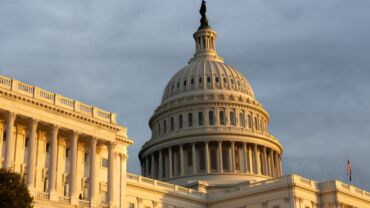At the annual ACAMS Hollywood event, regulators discussed how the coming release of the government's financial crime oversight priorities later this summer will impact financial institutions
On Jan. 1, 2020, the U.S. Congress enacted one of the most significant changes to the nation’s anti-money laundering (AML) laws since the USA PATRIOT Act of 2001. Known as the Anti-Money Laundering Act of 2020, the reforms have been on the minds of financial institutions, law enforcement, regulators, and — not surprisingly — financial criminals world-wide. Yet, there are many questions surrounding the law and its implementation.
Earlier this month, the AML community got some answers. The U.S. Treasury Department’s AML unit said it expects to issue draft regulations outlining the government’s financial crime oversight priorities — as required by the AML Act of 2020 — sometime this summer. But until a rule is made final and both examiners and financial institutions are briefed by regulators, compliance expectations will not change.
The comments by officials came during a recent panel, Regulators, Unmediated: Oversight Insights from Regulatory Leaders, held by the Association of Certified Anti-Money Laundering Specialists (ACAMS) at its annual ACAMS Hollywood event, which this year was held remotely.
“The federal banking agencies don’t intend to go out and examine on any of these priorities until there is a final rule and [bankers] have clear guidance on what they’re supposed to be doing. and the rule is effective,” said Koko Ives, manager of the Bank Secrecy Act compliance section with the U.S. Federal Reserve.
The U.S. Treasury Department’s AML unit said it expects to issue draft regulations outlining the government’s financial crime oversight priorities — as required by the AML Act of 2020 — sometime this summer.
The AML Act, which among other things aims to clarify and streamline certain compliance obligations and bolster use of new technology to combat financial crime, gave the U.S. Treasury 180 days — until early July — to issue AML and counter-terror finance (CFT) “priorities” aimed at helping the private sector focus its policing of transactions on areas of greatest interest to law enforcement. Financial institutions will be obliged to incorporate these priorities into their compliance programs, likely in part by amending elements of their risk assessments.
Treasury’s Financial Crimes Enforcement Network (FinCEN) “anticipates issuing the AML/CFT priorities at some point in the summer,” noted Barry Emmert, director of the Treasury’s office of regulatory policy. “The guidance will clearly address what financial institutions are expected to do with the AML/CFT priorities while we work on the implementing regulations associated with that,” Emmert said.
FinCEN is working closely with the federal banking regulators “and I don’t think there will be any surprise that these priorities are going to be consistent with Treasury’s National Illicit Finance Strategy as required by Congress,” Emmert added.
Push to develop AML priorities
Lisa Arquette, associate director of the anti-money laundering and cyber-fraud branch at the Federal Deposit Insurance Corporation (FDIC), said the push to develop AML priorities “is a critical priority for our agency,” adding that it is similarly important that “we communicate with the banks we supervise and with our examiners.”
If FinCEN rolls-out priorities mid-year, the FDIC will “need to make some adjustments to our Bank Secrecy Act compliance program rule,” Arquette said. In the past, when major changes to regulators’ AML expectations have been enacted, the FDIC has hosted training sessions both federal and state examiners and held a webinar for the banking industry to solicit questions, allowing banks to “get a consistent response from all of the banking agencies and FinCEN,” Arquette explained.
“I would envision — without committing the other agencies to do something like this — that the FDIC would have a keen interest in hosting a webinar for the industry shortly after our examiner webinar to make sure that we’re all on the same page moving forward,” she noted, adding that weaving AML priorities into their programs will be a significant change for the banking industry. “We just want to be sure that we’re communicating with the industry and with our staff.”
The Office of the Comptroller of the Currency (OCC) also is keen to ensure Treasury’s priorities “are communicated effectively and that there is a clear understanding of what’s required and when,” said Donna Murphy, deputy comptroller for compliance risk policy at the OCC. “Making it clear to bankers and examiners how those are going to be implemented is going to be critical, and we’re already talking about that among the agencies.”
Murphy added that the OCC also plans to train examiners and is wants to hold online events for the private sector. “Training is the key, the core, and the step precedent to the examinations,” she said. “And that communication piece is a key and involves not only training for our examiners, but also communication with industry.”







